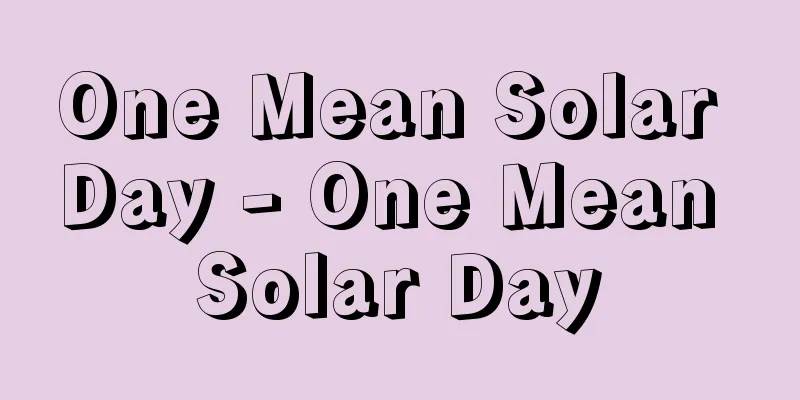One Mean Solar Day - One Mean Solar Day

|
…The period of rotation is approximately 23 hours, 56 minutes, and 4.0905 seconds (one mean sidereal day), and its direction is the same as the direction of revolution and the direction of rotation of the sun. The time from when the sun reaches its zenith in the sky at noon to when it reaches its zenith in the sky the next day is called one mean solar day, and this is 24 hours. The division of day and night occurs due to the rotation of the sun. … *Some of the terminology that refers to "one mean solar day" is listed below. Source | Heibonsha World Encyclopedia 2nd Edition | Information |
|
…自転の周期は約23時56分4.0905秒(1平均恒星日)で,その向きは公転の向きとも太陽の自転の向きとも同じである。太陽が正午に南中してから翌日の正午に南中するまでの時間を1平均太陽日といい,これを24時間とする。自転により昼夜の区別が生じる。… ※「1平均太陽日」について言及している用語解説の一部を掲載しています。 出典|株式会社平凡社世界大百科事典 第2版について | 情報 |
<<: Position Vector - 1 Vector
Recommend
picrotin
…A convulsive toxin contained in the seeds of Ana...
Podiceps grisegena (English name) Podiceps grisegena
…[Hiroshi Hasegawa]. … *Some of the terminology t...
"African Magazine" - Afrikashi
…He was baptized and given the name of the Pope, ...
Sumida Hachiman Shrine
This shrine is located in Hashimoto City, Wakayama...
Giant mantis - Giant mantis
...At first glance, the eggs look like those of a...
Illumination - Irumine-shion (English spelling) illumination
Originally a word meaning illumination, it refers...
Kinki Revolution - Kinki Kakumei
This was a slogan used by the right-wing movement ...
Competitive inhibition
⇒ Competitive inhibition Source: About Shogakukan ...
Holland shop - Holland shop
…His translations include the first urine diagnos...
after that
A full-length novel by Natsume Soseki. It was ser...
The Tale of Shunko
A classic Korean novel. A novelization of a belov...
Dreikönigtag (English spelling)
…The 28th is the Day of the Innocent Child, when ...
convention for the avoidance of double taxation
The Convention for the Avoidance of Double Taxati...
Aquino, B.
... However, the innovative policies that were im...
Kimon (English spelling)
[Born] Around 512 B.C. [Died] 449 BC. Cyprus. Anci...









